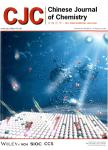When Kinases Meet PROTACs
When Kinases Meet PROTACs作者机构:Interdisciplinary Research Center on Biology and Chemistry Shanghai Institute of Organic Chemistry Chinese Academy of Sciences 26 Qiuyue Rd Pudong Shanghai 201210 China Department of Cancer Biology Dana-Father Cancer Institute Boston MA 02215 USA Department of Biochemistry and Molecular Pharmacology Harvard Med- ical School Boston MA 02115 USA
出 版 物:《Chinese Journal of Chemistry》 (中国化学(英文版))
年 卷 期:2018年第36卷第10期
页 面:971-977页
核心收录:
学科分类:0710[理学-生物学] 071010[理学-生物化学与分子生物学] 081704[工学-应用化学] 07[理学] 08[工学] 0817[工学-化学工程与技术] 070305[理学-高分子化学与物理] 080501[工学-材料物理与化学] 0805[工学-材料科学与工程(可授工学、理学学位)] 0703[理学-化学]
主 题:kinase inhibitors PROTACs drug discovery ligases kinase degradation drug design
摘 要:Small molecule drugs targeting kinases have revolutionized treatment options for millions of patients worldwide, especially in oncology. These targeted treatments have less side effects because they inhibit a specific dysfunctional kinase usually with relatively narrow selectivity. However, kinase inhibitors do have well-established liabilities, most prominently the emergence of drug resistance. Moreover, the majority of kinases are multi- domain and multifunctional proteins that in addition to their enzymatic activity have scaffolding and other roles, and inhibitors seldom address these alternative functions. Recently, small molecule mediated targeted protein degradation emerged as a new pharmacological strategy. The majority of small molecule degraders are bispecific molecules called proteolysis targeting chimeras (PROTACs), and their mechanism of action is based on simultaneous recruitment of the target of interest and an E3 ligase, resulting in target polyubiquitination and eventual destruction by the proteasome. Over the last couple of years, PROTAC strategy has been developed and validated for a range of targets, including kinases. Here, we introduce the targeted protein degradation strategy, provide an overview of representative kinase PROTACs, and describe design rationales, efficacy and specificity. We also discuss their potential advantages, as well as comment on some of the limitations of this emerging pharmacological modality.



